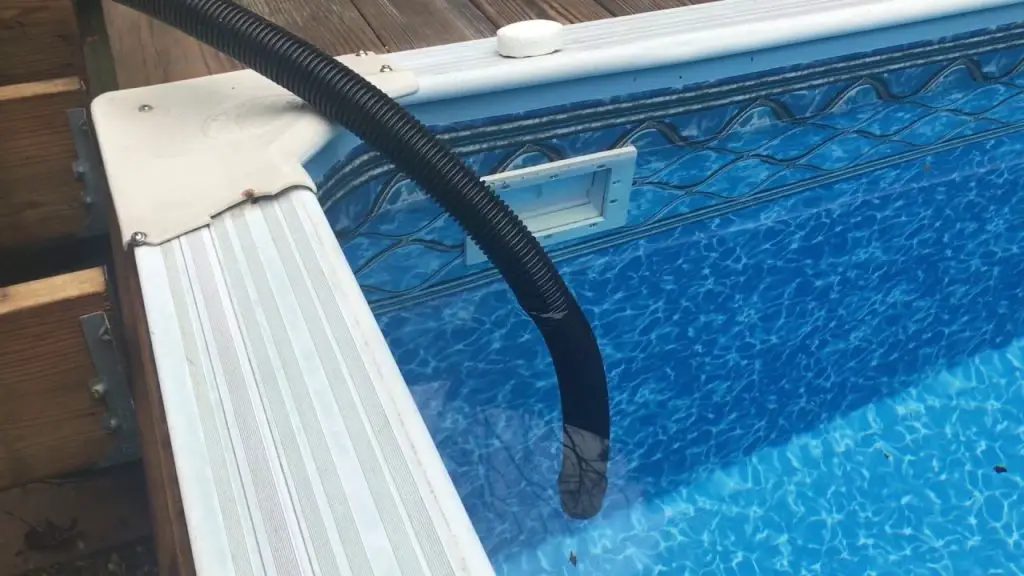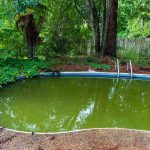Are you a proud owner of an above ground pool? Then, you know how important it is to properly maintain your pool to ensure the best swimming experience. One crucial aspect of pool maintenance is draining the water when necessary. In this article, we will walk you through a step by step guide on how to drain water from an above ground pool.
Gather the Necessary Tools and Equipment
Before you start draining your above ground pool, it is essential to gather the necessary tools and equipment. Here is a list of what you will need:
- A submersible pump
- A hose long enough to reach a suitable drainage area
- A pool brush for cleaning
- A pool cover (optional, but recommended to keep debris out during the process)
- A pool chemical test kit to check the water chemistry after refilling the pool

Credit: www.wikihow.com
Turn off the Pool Equipment
Before you start draining the pool, make sure to switch off all the pool equipment, including the pump, filter, and heater. This will prevent any potential damage to the equipment and ensure a safe draining process.
Prepare the Drainage Area
Choose a suitable drainage area for the pool water. Make sure it is downhill from the pool to allow the water to flow naturally. Also, ensure that the drainage area can handle the amount of water you will be draining from your pool.
Connect the Hose to the Submersible Pump
Attach one end of the hose to the submersible pump and ensure it is securely connected. It is crucial to use a well-fitting hose clamp to prevent any leakage or disconnection during the draining process.
Lower the Submersible Pump into the Pool
Gently lower the submersible pump into the pool, ensuring it is submerged in water. Place the pump in the deepest part of the pool to maximize water drainage efficiency.
Start Draining the Water
Turn on the submersible pump and let it start draining the water from your above ground pool. You can control the flow rate by adjusting the pump settings or using a flow control valve if available.
Clean the Pool Walls and Floor
While the water is draining, take the time to clean the pool walls and floor using a pool brush. Removing any debris or algae growth will make it easier to maintain your pool in the long run.

Credit: blog.linerworld.com
Monitor the Drainage Process
Keep an eye on the water level and monitor the drainage process closely. It may take several hours or even days to completely drain the pool, depending on the size and water volume.
Check the Water Chemistry
Once the pool is drained, it is vital to check the water chemistry before refilling it. Use a pool chemical test kit to measure the pH, chlorine, and other chemical levels. Adjust the chemicals accordingly to ensure a safe and balanced swimming environment.
Refill the Pool
After confirming the water chemistry is balanced, it’s time to refill the pool. Use a garden hose or any other appropriate water source to fill the pool. Take note of the recommended fill level to prevent any damage to the pool structure.
Resume Pool Equipment
Once the pool is refilled, switch on the pool equipment you had turned off earlier, including the pump, filter, and heater. This will ensure proper circulation and filtration of the newly filled water.
Cover the Pool (Optional)
For added protection, consider covering your pool with a suitable pool cover. This will prevent debris from falling into the water while you’re not using the pool and reduce the frequency of cleaning.
Conclusion
Draining water from an above ground pool is a necessary maintenance task to keep your pool in optimal condition. By following this step-by-step guide, you can safely and efficiently drain your pool and ensure a clean and balanced swimming environment. Remember to take careful steps while draining and refilling your pool to maintain its longevity and enjoy refreshing swims for years to come!





